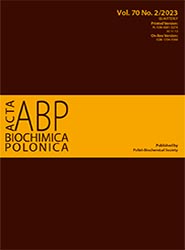Isolation and characterization of indigenous bacterial assemblage for biodegradation of persistent herbicides in the soil
Abstract
Abstract: Extensive pesticides (herbicides) use is negatively disturbing the environment and humans. Pesticide bioremediation with eco-friendly techniques bears prime importance. This study aimed to isolate and characterize three different herbicides (metribuzin, clodinafop- propargyl, MCPA (2-methyl, 4 chlorophenoxyacetic acids) and Bromoxynil) degrading bacterial strains from agricultural fields of Punjab University, Pakistan. Among the 12 bacterial isolates, 5 were metribuzin degrading, 3 were clodinafop propargyl degrading and, 4 were MCPA and Bromoxynil degrading bacteria. Morphological, microscopic, and molecular characterization revealed that the majority of these bacterial strains were gram-negative and belonged to Bacillus and Pseudomonas genera. The isolates A6, B3, and C1 were subjected to respective herbicide degradation and the data was confirmed through GC-MS analysis. The effect of herbicide concentrations, pH, and temperature on bacterial growth was determined at OD600. The strain A6 degraded 14.8% metribuzin out of the provided concentration of 50 ppm by following the deamination pathway. While the isolates B3 and C1 degraded 23.2% and 33.9% clodinafop, MCPA and bromo-xynil, respectively, at a spiking concentration of 50ppm. The clodinafop, MCPA and Bromoxynil were metabolized into less toxic products i.e., dicarboxylic acids and 2-methyl phenol respectively, and metabolized via decarboxylation and dehalogenation mechanism. The present study evaluates the herbicides degrading bacterial strains that could potentially be used for bioremediation of agricultural contaminated sites.
Acta Biochimica Polonica is an OpenAccess quarterly and publishes four issues a year. All contents are distributed under the Creative Commons Attribution-ShareAlike 4.0 International (CC BY 4.0) license. Everybody may use the content following terms: Attribution — You must give appropriate credit, provide a link to the license, and indicate if changes were made. You may do so in any reasonable manner, but not in any way that suggests the licensor endorses you or your use.
Copyright for all published papers © stays with the authors.
Copyright for the journal: © Polish Biochemical Society.


